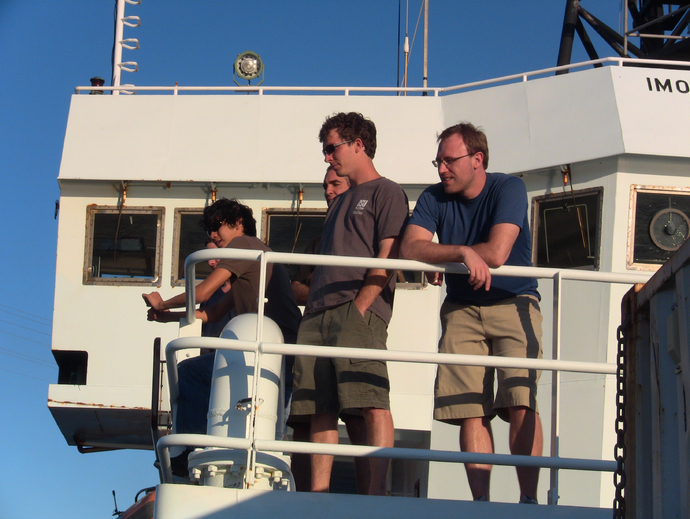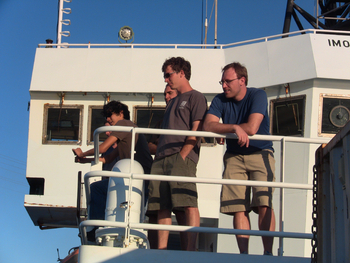Social and Scientific
Monday, August 02, 2010

Social and Scientific dynamics aboard the R/V Thompson
A seafloor observatory is simply the inevitable perpetuation of science fueled by the persistence and creative juices of the best that this field has to offer. I can’t wait to look back and say that I was a part of it.
Having been on only one other scientific cruise, I can say that the social and scientific dynamics on board Enlighten ’10 are much different than my only other experience at sea. When I arrived in Seattle, I was excited to spend two weeks collecting samples for my graduate research. But my experience has gone well beyond the science.
When I received the invitation to participate on Enlighten ’10, I liked the possibility of coupling an outreach opportunity with the ability to become involved with a state-of-the-art scientific venture in the Ocean Observatories Initiative. What I wasn’t expecting was such a laid back and friendly, yet driven, approach to the science at hand. This is the way that science should be conducted… with discussion, openness, and solidarity, even when opinions differ. It seems that all too often members of the scientific research community reside in a proprietary and combative mindset when it comes to their ideas. It is refreshing to witness the exact opposite.
The ability to interact with a group of extremely bright and inquisitive undergraduate students has also been extremely rewarding. Because they are using this opportunity for credit, I was worried that the competition often witnessed in the classroom would carry over to the ship. This has not been the case. It has been a pleasure to watch eight or ten young, bright minds work together to problem solve and to think creatively about issues--in this case, gas hydrates--about which they knew nothing prior to embarking a week ago. The enthusiasm with which they ask about what is unknown to them is something that any person of any age can learn from.
In addition to the people, the technology that this cruise will result in is surreal. In the 1970s, the Alvin human submersible revolutionized the way oceanography was conducted by establishing the ability to actually see the seafloor, creating an infinitely better sense of environment than remote techniques. This technology was enhanced with the advent of remotely and autonomously operated vehicles, creating a visual, unmanned human presence in the oceans. A seafloor observatory is simply the inevitable perpetuation of science fueled by the persistence and creative juices of the best that this field has to offer. I can’t wait to look back and say that I was a part of it.
Craig Joseph, Oregon State University

